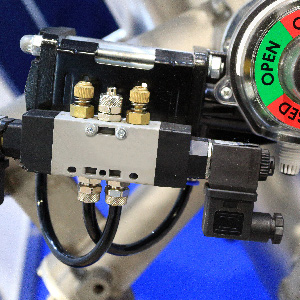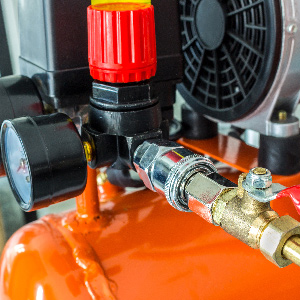How To Choose The Right Process Control Valves
Post By: Tom Rowse On: 03-08-2020 - Pneumatics
What Are Process Control Valves?
Control valves are critical to the establishment of an efficient process and smooth running over the lifetime of a system. The controller sends signals to the valves which can change the size and direction of fluid flow, and in turn affect other process parameters, such as liquid level, temperature and pressure.
How To Choose The Right Process Control Valves
The many different types of process control require valves of all sizes, types, materials and modes of actuation. Knowing how to choose the right process control valves might seem a little daunting. You will have to consider technical specifications such as the level of control a particular valve will provide, its delivery time, and the amount of resolution it can achieve, not to mention its life expectancy and maintenance requirements. Your choice will also be affected by cost, and may demand application-specific expertise.
An additional factor to evaluate is how versatile the valves may be; whether they can cope with a wide range of different flows and still maintain stable flow control. They may be required to have connectivity that enables remote monitoring and technology that makes them easy to maintain. In our experience at Rowse Pneumatics, we have found that linear angle valves and rotary valves offer the most wide-ranging applicability.
Linear Valves
Linear valves are simply designed and easy to maintain. They are also extremely versatile, offering a wide range of pressure classes, sizes and design options. Linear valves are typically more expensive, usually using pneumatic or hydraulic actuators. However, they are also more resistant than rotary valves to cavitation, erosion and excessive noise. They tend to operate more slowly, but have greater accuracy and positional stability of the closure element. Linear valves can be cage-guided, stem-guided or top/bottom-guided.
Linear Angle Valves
Linear angle valves are a type of globe valve where the inlet and outlet ports are situated at right angles to each other, and are often used in tight spaces. In this type of valve, a closure element – a slat, a disc or something flexible like a diaphragm – is moved in and out of the angled valve seat by means of a linear actuator. The valves can be cage-guided or stem-guided, and have a range of design options. These include restricted trim, expanded outlet connections for low-flow applications, and outlet liners that help to resist damage. They are best suited for more demanding applications, where noise, large flow rates and flashing can be more easily mitigated with appropriate technology.
Linear Globe Valves
Linear globe valves are a popular choice for their noise-mitigating properties, their ability to regulate a wide range of flow requirements, and their internal accessibility which allows easy maintenance. A spherical body typically contains a stationary ring seat with a cylindrical or disc-shaped plug element. These valves are available in all design styles, with top/bottom-guided and stem-guided valves being more suitable for general industrial purposes and less demanding applications. Cage-guided valves perform well in a wider range of applications, and can be fitted with mitigating features for noise and cavitation, but they tend to be more expensive. All types of globe valve can be controlled by all modes of actuation, making them a great deal more versatile.
Three-Way Control Valve
Linear three-way control valves are commonly used in industrial applications, and have a combination of one and two inlets and outlets, which enables one-into-two fluid separation or two-into-one mixing. This type of valve is usually cage or stem-guided, and is used to control the amount of pressure or flow in between two sections of the piping system. Typically, this valve is not used in very demanding applications, being more suited for things like boilers, water chillers, fan coils and air-handling units.
Rotary Valves
Rotary valves regulate flow by rotating one or more passages in a transverse plug. They can incorporate a wide variety of adaptive technology, which makes them very versatile. They typically offer a less tortuous inline path than linear valves, while still providing similar rangeability, flow control and severe-system resilience. Their design is inherently advantageous to applications with actuating fluid which may contain particulates and can't be kept scrupulously clean.
Other Factors To Consider
The prevailing standards of the country and industry must be taken into account when deciding how to choose the right process control valves, as well as the varying expectations of different customers. The priorities of the end-user are the most important. This usually means a versatile, robust valve, combining the necessary degree of control with a long service life and the greatest ease of use and maintenance.
Standardised performance is also desirable to make repair and replacement of parts more straightforward. Valves should be able to perform equally well in a wide range of fluid environments: clean, dirty, abrasive, corrosive or viscous, and at high temperatures or pressures. While incorporating a filtration unit in such environments is possible, it makes the system more complicated and requires an additional maintenance programme.
The valves must be capable of consistent, stable flow control in all conditions so as to prevent production downtime. They must match the specific control characteristics required for their particular process conditions, such as load, linear parameters and equation. Valves must also be able to handle the entire range of potential flow changes that occur in the process. They should have adequate and compatible connectivity to a management system, to enable remote control and monitoring of processing applications.
Process control valves should also be selected with ease of proper maintenance in mind, including:
- maintenance access without the valve body having to be removed from the system
- inspection and adjustment access to the valve packing
- easy disconnection and reconnection from the actuator, such as coupled or splined shaft connections
- shaft protection which should be blowout-proof
- self-purging, enclosed actuator linkage
- self-aligning seat ring to ensure tight shut-off
Taking all these factors into consideration is no easy task, but it's a necessary one to ensure you choose the right process control valves for your particular circumstances. If you have any queries or concerns about your selection, our expert team at Rowse Pneumatics will always be happy to help.
Get More From Rowse Straight To Your Inbox




